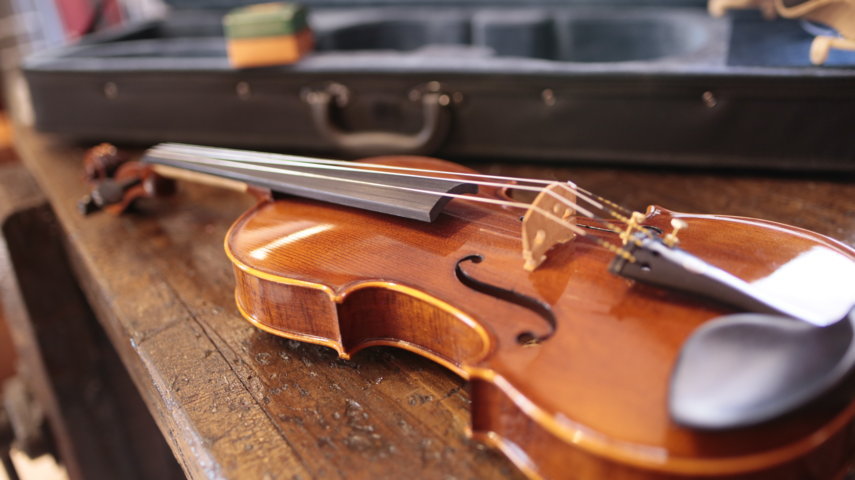Evaluating the quality of a violin requires a combination of visual analysis, acoustic tests and subjective considerations related to the musician’s personal taste. A “good” violin is not only a well-built instrument, but also one that is suited to the needs and style of the violinist. Here are the main aspects to consider when evaluating the quality of a violin.

—
### 1. **Materials and construction**
A good violin is built with high-quality materials:
– **Soundboard**: It should be made of spruce, chosen for its lightness and ability to vibrate. Observe the annual rings of the wood: a regular and well-visible grain is a sign of quality.
– **Back, sides and neck**: Usually made of maple. The “flame” back (visible wavy grain) is often present in quality violins, although aesthetics do not always guarantee acoustic properties.
– **Accessories**: The fingerboard should be made of ebony, as should the nut and pegs, for greater strength and stability.
#### Finishes
– The varnish should be even but not too thick, so as not to dampen the vibrations of the wood. A good varnish protects the instrument without altering its sound.
– Check the details of the workmanship, such as the symmetry of the f-holes and the cleanliness of the joints. Careful workmanship indicates a high level of craftsmanship.
—
### 2. **General Condition**
If you are examining a used or antique violin:
– Check for cracks, deformations or poorly done repairs.
– Make sure the bridge is in good condition and correctly positioned.
– Check that the sound post (the small rod inside the instrument) is in place and well mounted, as it greatly affects the sound.
—
### 3. **Sound Test**
Sound quality is the main factor in evaluating a violin. Here are some things to look for when testing it:
#### Projection and Volume
– Play the violin in different sized rooms. A good violin should project sound effortlessly, maintaining a balanced volume.
#### Tonal Balance
– Listen to the response of all the strings: a quality violin should not have strings that “smother” or dominate the rest. The transitions between one string and another should be smooth and balanced.
#### Timbre
– A good violin has a rich and complex sound, capable of varying from warm and deep tones in the lower registers to bright and clear tones in the upper registers. The timbre should be pleasant and free of harshness.
#### Dynamics
– The instrument should respond well to changes in intensity: from delicate pianissimo to powerful fortissimo, the sound should not distort.
#### Resonance
– Play a note and listen to how the violin “responds” after you stop the bow. The natural resonance of the instrument can indicate good construction.
—
### 4. **Ease of Play**
A quality violin responds immediately and effortlessly:
– **Response to the Bow**: The violin should produce a clear sound even with light bow pressure.
– **Comfort**: The shape and weight of the violin should allow for a comfortable position for both the left hand and the bow.
—
### 5. **Label and Authenticity**
Many violins have a label on the inside, often visible through an f-hole. However, this should not be relied upon exclusively:
– Labels can be fake or misleading.
– It is advisable to consult an expert violin maker to verify the authenticity of the instrument, especially if it is attributed to a famous maker.
—
### 6. **Value for Money**
A good violin does not necessarily have to be expensive, but the price should reflect the quality of the materials and construction. Handcrafted violins by expert luthiers cost more, but they offer lasting value and better sound quality than factory instruments.
—
### 7. **Expert advice**
If you are inexperienced, it is helpful to have an experienced musician or trusted luthier accompany you when purchasing. An expert can identify hidden defects and correctly evaluate the sound quality of the instrument.
—
### 8. **Subjective factor**
Ultimately, the best violin for a musician is the one that suits his or her preferences and style. The feel of the instrument while playing and how it integrates with your technique and personal interpretation are key elements in the choice.
—
### Conclusion
A good violin is the result of a combination of quality construction, excellent materials and the ability to adapt to the violinist. While some criteria may be objective, the final choice is often a matter of personal feeling. Investing time in testing and evaluating the instrument is essential to finding the perfect violin.